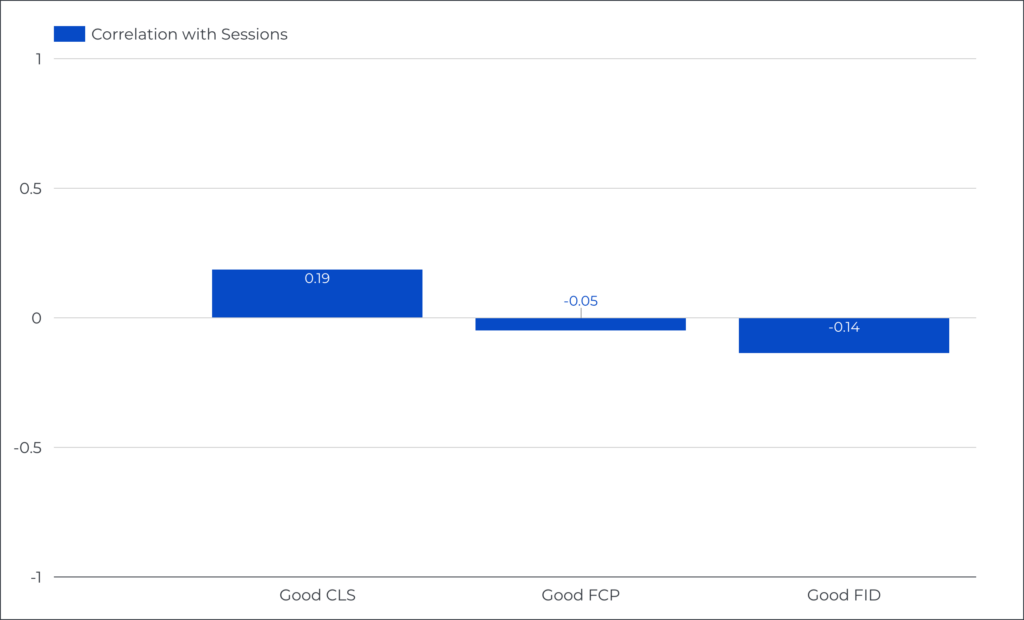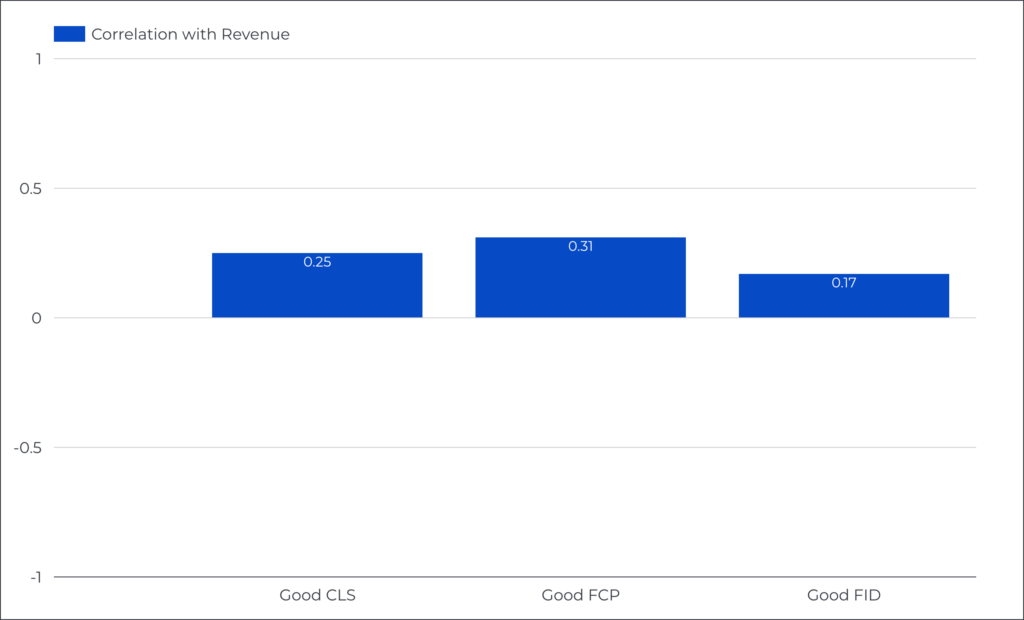It’s no secret that Portent is relentless in our pursuit of website performance optimization. We have long tracked the swift currents of site speed and their undeniable impact on conversions. We’ve also extensively documented the rise of Core Web Vitals (CWV) and offered a step-by-step guide on using them in reporting.
NOTE: We will not review the definitions and contributing factors influencing the Core Web Vitals mentioned in this post. If you’d like more of a general primer on Core Web Vitals, please see the links above and return to this post when you’re done.
But a question lingers: Beyond the obvious connection to site speed, how do Core Web Vitals affect website visibility and user experience? The answers lie not in assumptions but in the crucible of data.
This study explores the correlations that map out a subtle yet significant interplay between CWV, revenue, and conversions.
The Methodology
We took a meaningful glance at seven diverse and sizable websites spanning various industries, including Automotive, Education, Tech SaaS, and Travel.
For a sense of scale, these sites averaged 764K monthly sessions, $4.6M monthly revenue, and 29K monthly conversions.
This study focused on the timespan between May 2019 and September 2023, a long enough period to iron out any peaks or valleys caused by the pandemic.
Lastly, we used Pearson Correlation, a scale from -1 to 1, to look at the relationship between First Contentful Paint (FCP), Cumulative Layout Shift (CLS), First Input Delay (FID), and Sessions, Revenue, and Goal Completions.
The Results
When correlating Core Web Vitals to website traffic, we found…

- Good FCP and Sessions: −0.051, indicating a very weak negative correlation.
- Good CLS and Sessions: 0.189, indicating a weak positive correlation.
- Good FID and Sessions: −0.139, indicating a weak negative correlation.
When correlating Core Web Vitals to revenue, we found…

- Good FCP and Revenue: 0.313, indicating a moderate positive correlation.
- Good CLS and Revenue: 0.253, indicating a weak to moderate positive correlation.
- Good FID and Revenue: 0.171, indicating a weak positive correlation.

When correlating Core Web Vitals to conversions, we found…
- Good FCP and Goal Completions: −0.172, indicating a weak negative correlation.
- Good CLS and Goal Completions: 0.305, indicating a moderate positive correlation.
- Good FID and Goal Completions: 0.015, indicating a very weak positive correlation.
The Takeaways
Faster Site Speed Suggests Increased Revenue Potential. As First Contentful Paint accelerates, so does the revenue potential. This result corroborated our site speed findings from the past.
Page Layout Stability Suggests Increased Conversion Potential. A strong Cumulative Layout Shift score fosters a foundation for higher goal completions. Stability in page layout is what users are after. Ads, modals, and pop-ups are generally turn-offs regarding conversion.
Core Web Vitals Have No Discernable Impact On Traffic. The impact of Core Web Vitals on traffic is negligible. It seems Google’s push for these metrics was less about serving the algorithm as ranking factors and more a call for enhanced user experiences across the web.
Conclusion
In the grand scheme of site performance, Core Web Vitals emerge not as traffic drivers but as the user journey’s subtle enhancers, leading to a tapestry that captivates and converts.
That said, we know that improving Core Web Vitals scores is no small task and doesn’t happen overnight. Portent’s Site Speed & Core Web Vitals Audit is a fantastic starting point for chipping away at the changes required to score well.
As we continue to sculpt the website experiences of tomorrow, let’s take a moment to absorb these findings. Core Web Vitals are crucial to unlocking a website’s full potential—a potential for user satisfaction and conversion success.









